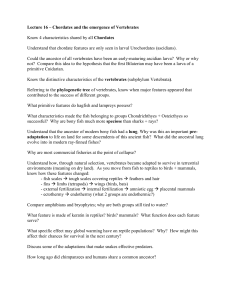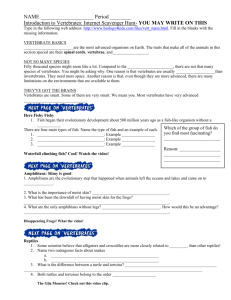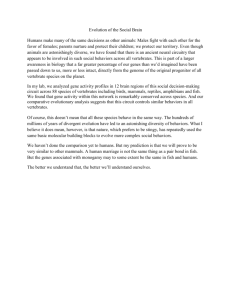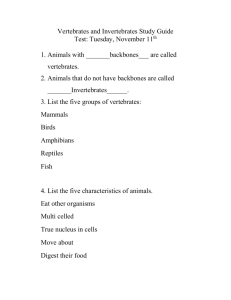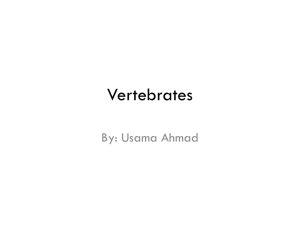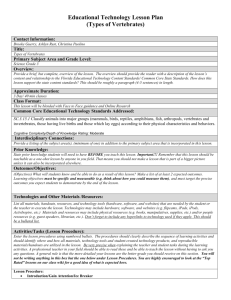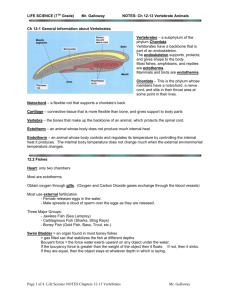1. general aspects
advertisement
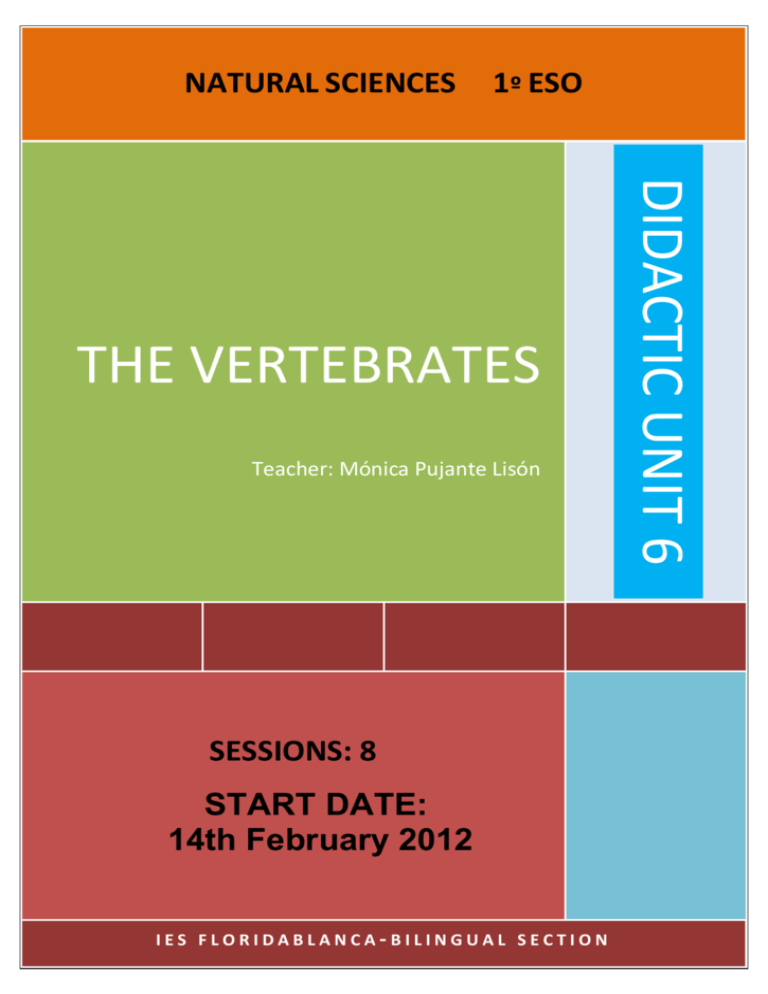
NATURAL SCIENCES 1º ESO Teacher: Mónica Pujante Lisón SESSIONS: 8 START DATE: 14th February 2012 IES FLORIDABLANCA-BILINGUAL SECTION DIDACTIC UNIT 6 THE VERTEBRATES INDEX 1. GENERAL ASPECTS:.................................................... 3 2.JUSTIFICATION: ............................................................. 3 3. AIMS: .............................................................................. 3 4. CONTENTS: ................................................................... 3 4.1 CONCEPTS: ................................................................................... 3 4.2 PROCEDURES: ............................................................................. 4 4.3 ATTITUDES: ................................................................................... 4 5. METHODOLOGY:........................................................... 4 6. ATTENTION TO DIVERSITY: ........................................ 4 7. RESOURCES: ................................................................ 5 8. ASSESSMENT CRITERIA: ........................................... 5 9. EXAMPLE OF THE POWER POINT PRESENTATION USED IN CLASS: ............................................................... 5 1. GENERAL ASPECTS: Title: The vertebrates Cycle: First Cycle Form: 1st level of ESO Term: Second Scheduling: From 14th to 29th of February. 2. JUSTIFICATION: This unit helps our students to understand more about their environment and improve their knowledge about living beings. In this unit, the students study vocabulary that they have previously seen in Primary School but in greater depth. Animals are an area that arouses a lot of curiosity in our students, so we must consider vertebrates as one topic that is worth exploring, so that the students can develop respectful behaviour towards animals and increase awareness about their protection. In this unit, we aim to achieve some of the area general objectives and cycle objectives set out in our didactic programme. 3. AIMS: 1. To study the general characteristics of animals. 2. To learn the general characteristics of vertebrates. 3. To learn the main groups of vertebrates: Fish, amphibians, reptiles, birds, mammals. 4. To identify the characteristics which differentiate one group from another. 4. CONTENTS: 4.1 CONCEPTS: 1. The main characteristics of animals: nutrition, interaction, reproduction. 2. Classification of animals: Invertebrates and vertebrates. 3. Characteristics of fish. Types of fish: Cartilaginous fish and bony fish. Examples. 4. Characteristics of amphibians. Types of amphibians: anura and urodela. Examples. 5. Characteristics of reptiles. Types of reptiles: Turtles, Lizards, Snakes, Crocodiles. Examples. 6. Characteristics of birds. Types of birds: Ratites and carinatae. Examples. 7. Characteristics of mammals. Types of mammals: Monotremes, Marsupials, Placental mammals. Examples. 4.2 PROCEDURES: 1. Watching videos about different animals. 2. Asking and answering questions. 3. Writing flashcards about vertebrates. 4. Reading a text. 5. Talking about their favourite animal. 6. Answering quizzes. 7. Making a poster. 8. Playing animals cards. 4.3 ATTITUDES: 1. To respect the guidelines and rules that the teacher explains in the classroom. 2. To be cooperative, tolerant and respectful of others when students are doing an individual or collective activity. 3. To show interest and curiosity when learning new words. 5. METHODOLOGY: -Students work in groups or in pairs depending on the activities. -Sessions 1 to 5, study contents and do procedure activities. Session 6 is a dissection of a fish in the lab. Session 7 is a revision class with oral quizzes. The last session is an exam about the contents of the unit. -Mainly students will stay in the classroom, but we will also use the lab and the computers in Plumier class too. 6. ATTENTION TO DIVERSITY: -Advanced students write a text in pairs about endangered vertebrates. -Students with some difficulty only learn some of the vocabulary taught in the unit. 7. RESOURCES: - Photocopiable sheets and flashcards. - Pieces of documentaries about animals on Youtube. - Online activities in the Internet: www.biology4kids.com http://www.brainpopjr.com/science/ http://www.sheppardsoftware.com/web_games_trivia_animal.htm 8. ASSESSMENT CRITERIA: 1. To know the main characteristics of vertebrates. 2. To be able to differentiate between each group of vertebrates. 3. To give examples of each group of vertebrates. 4. To show the ability to read and understand a text in English. 5. To use the new vocabulary learned during the lessons. 9. EXAMPLE OF A POWER POINT PRESENTATION USED IN CLASS:
